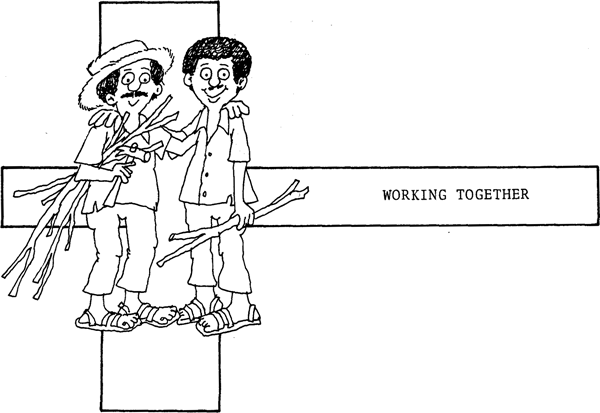
WHY WORK TOGETHER
Working together means:
| - | Achieving things you can't do alone. |
| - |
More and better ideas. |
| - | Less time to complete your projects. |
| - | Better possibilities of getting credit and technical assistance. |
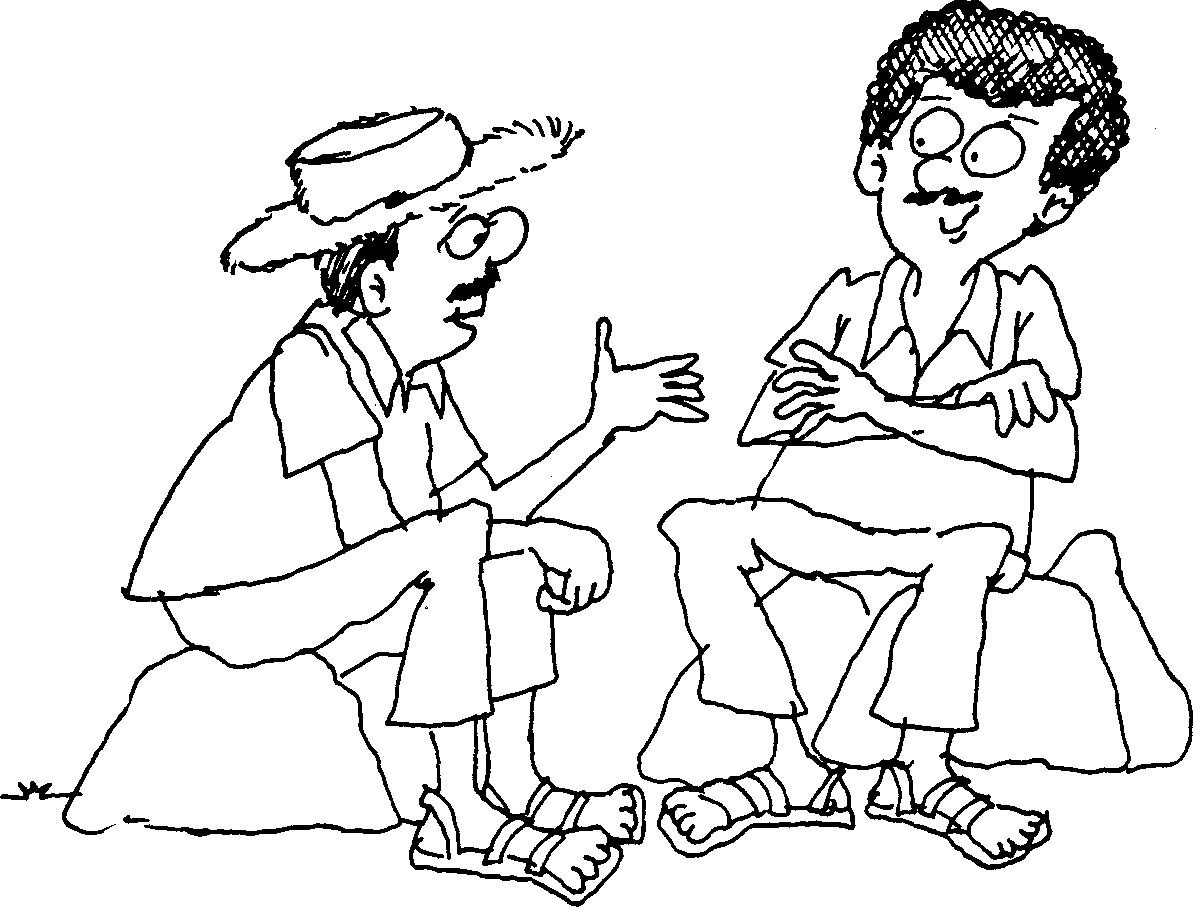
|
Working together increases productivity. |
Working together also means AGREEMENT.
Agreement is needed on:
| - | what to do (the objective) |
| - | how to do it (the procedure) |

They have the same objective but they have not agreed on how to do it.
They both want to eat, but...

They have the same objective and the appropriate procedures.
They both want to eat and they both eat.
|
Working together means agreement on objectives and on procedures. |
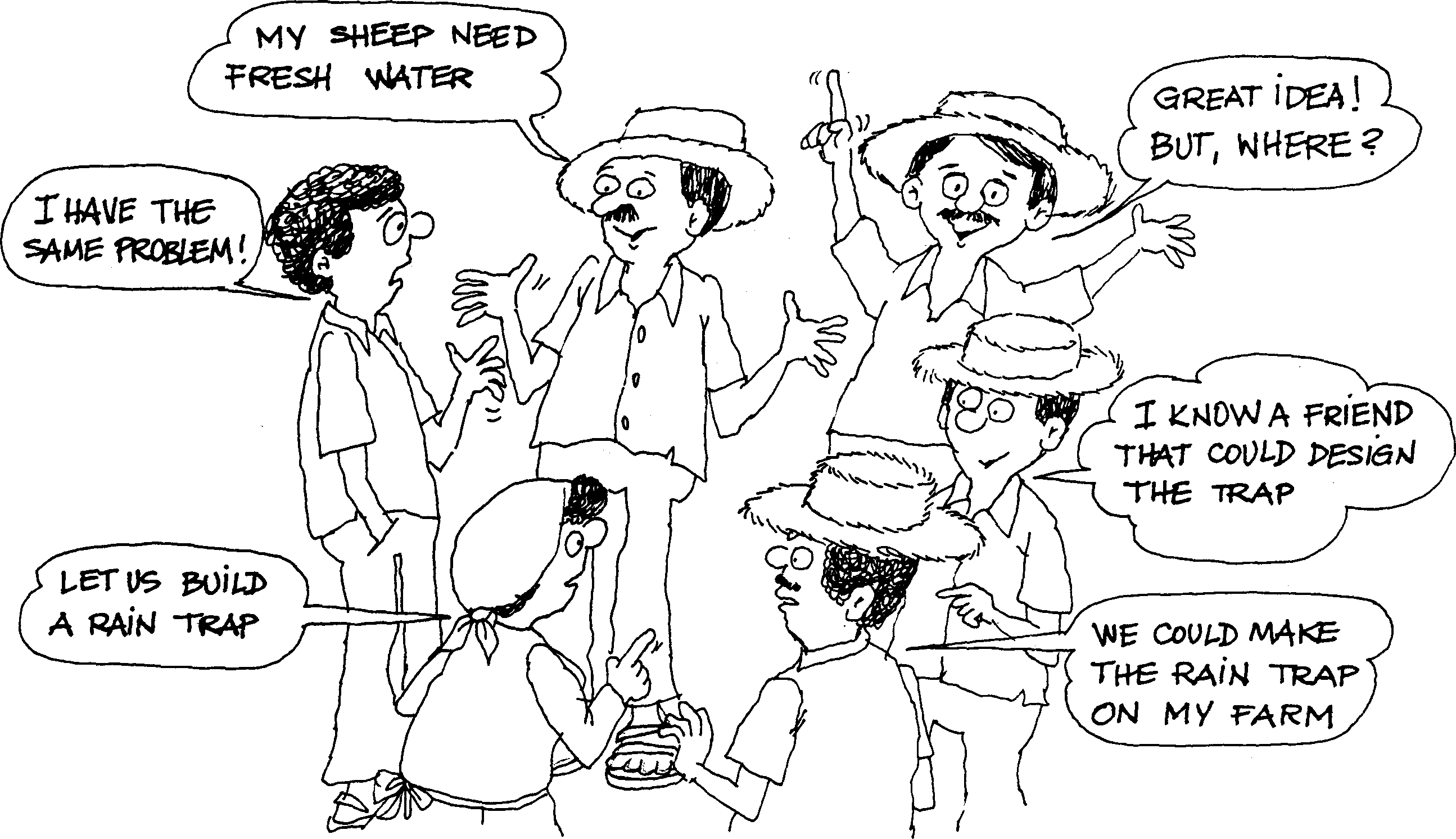
|
They have a common objective: a rain trap. |
HOW CAN WE MAKE A RAIN TRAP?

Here are some ideas the group accepted:
First, they decided to organize themselves.
So:
| - | Mrs. Thomas was designated as project leader. |
| - | Robert Davis was to be the secretary. |
Other agreements:
- The secretary should keep a book with the main decisions. - Each member of the group should contribute with work, resources or money. - A clear record of expenses should be kept.
- The project should be studied carefully. - Progress was to be evaluated regularly.
This is the design Robert Davis and a friend did with the help of a technician.

Revising Robert Davis' book we found that these were the things they had to decide in the first place:
Which is the best rain trap according to our resources?
What size is enough for our sheep?
Where is the best location?

They also had to answer these questions:
What are the materials we will need?
| - | Do we have them? |
| - | Do we have to buy them? |
| - | Who will buy them? |
| - | Will we need credit? |
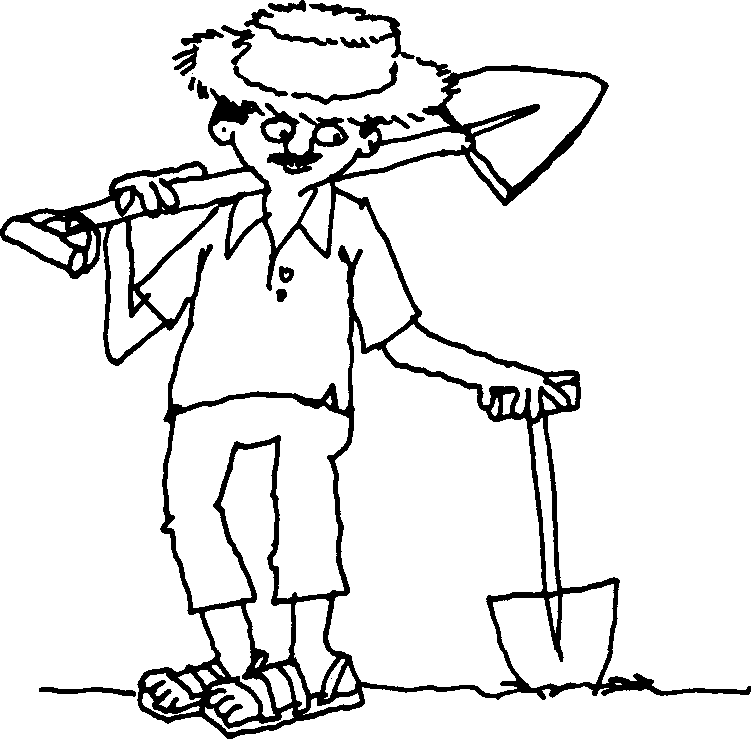
Who will be in charge of the money?
How will we distribute the different work such as:
| - | building the fence? |
| - | making the capturing area? |
| - | digging the reservoir? |
| - | installing the tubes? |

Time is also important.
| - | How long will it take to finish the rain trap? | |
| - | When will we do it. | |
| - | during week-ends? | |
| - | after harvesting? | |
| - | before lambing? | |
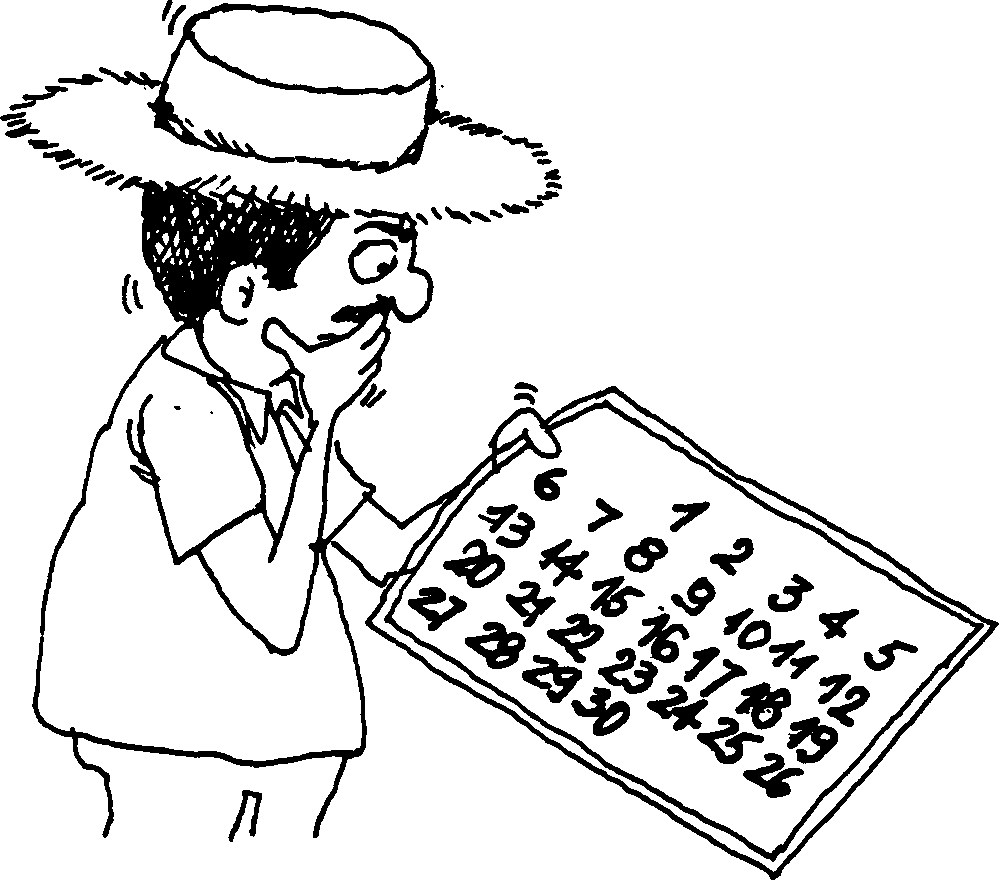
SOME IDEAS FOR COOPERATIVE PROJECTS
We do not know what your needs are, but here are some ideas you and your neighbours might consider.
| • | Create a stud centre. |
| • | Develop a community first-aid station for your sheep. |
| • | Develop a campaign to control ticks or mange. |
| • | Deciding on communal pastures. Planting and maintaining a "protein bank". |
| • | Building communal water facilities. |
| • | Development of some cottage industries (such as the use of skins). |
| • | Cooperative efforts towards appropriate ways for selling sheep (market). |
| • | Organizing courses on topics such as: health administration, among others. |
| • | Planning some protection against thieves. |
| • | Create conditions for financial credits or technical assistance. |
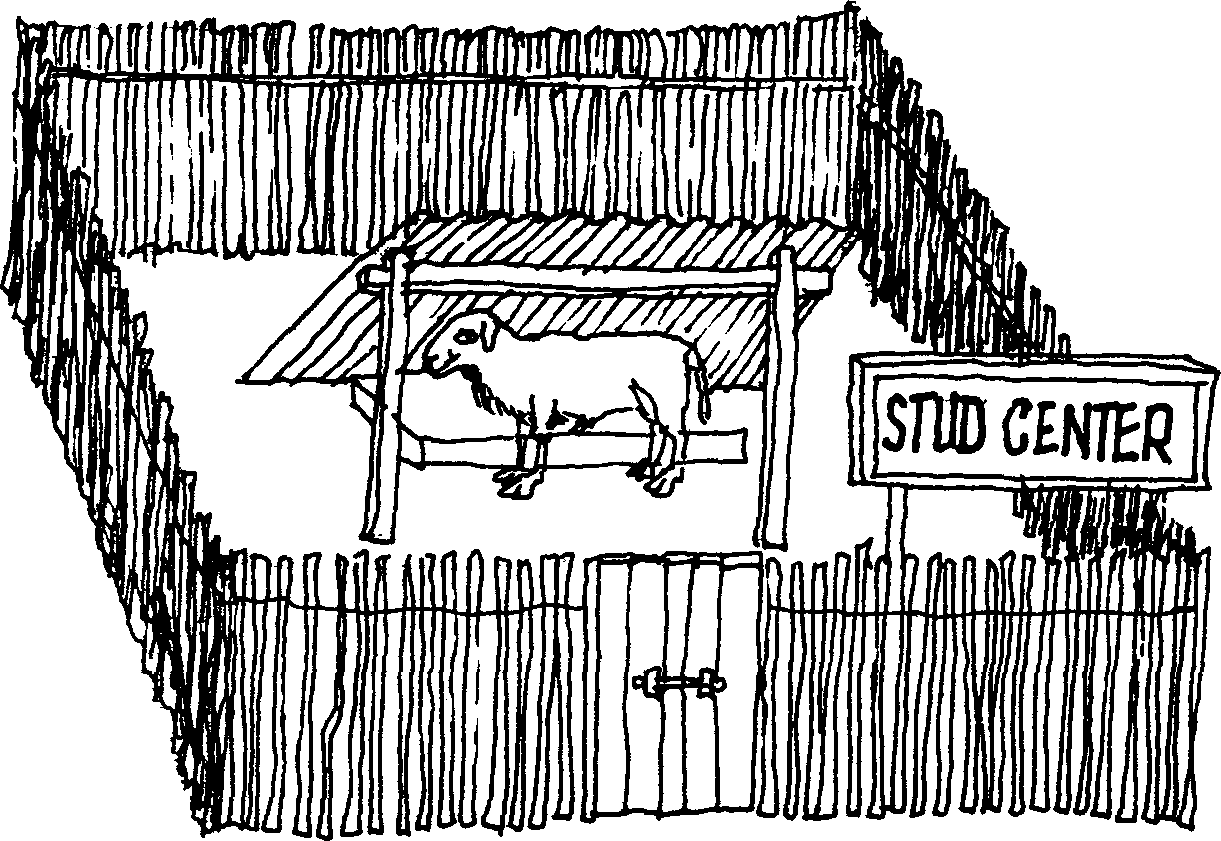

And most important of all:
|
Projects the community needs to better their livelihoods. |
Some last ideas:
| - | Getting together to work is important. |
| - | Staying together and using the experience to improve organization is more important and efficient. |
| - | Farmers can improve their productivity by organizing themselves on a permanent basis |
Discuss this idea with your friends; we hope they have been of some help. to you and to your purposes.
This chapter has no final test.
Test yourself and your neighbours with your own project.